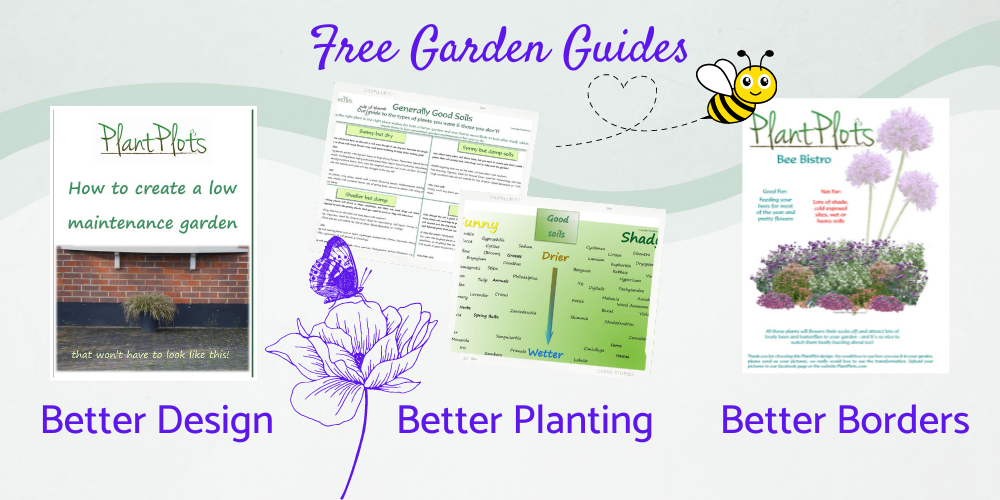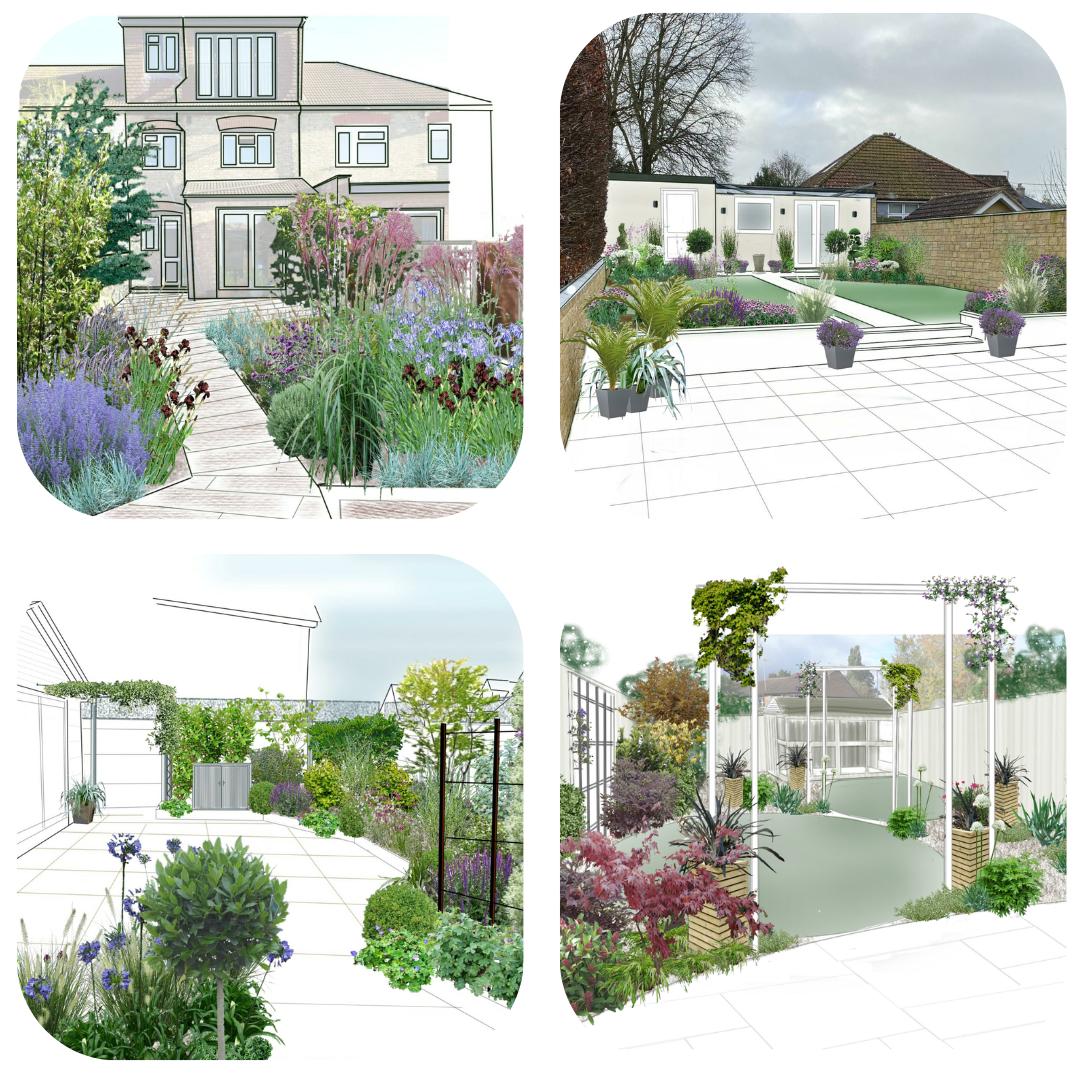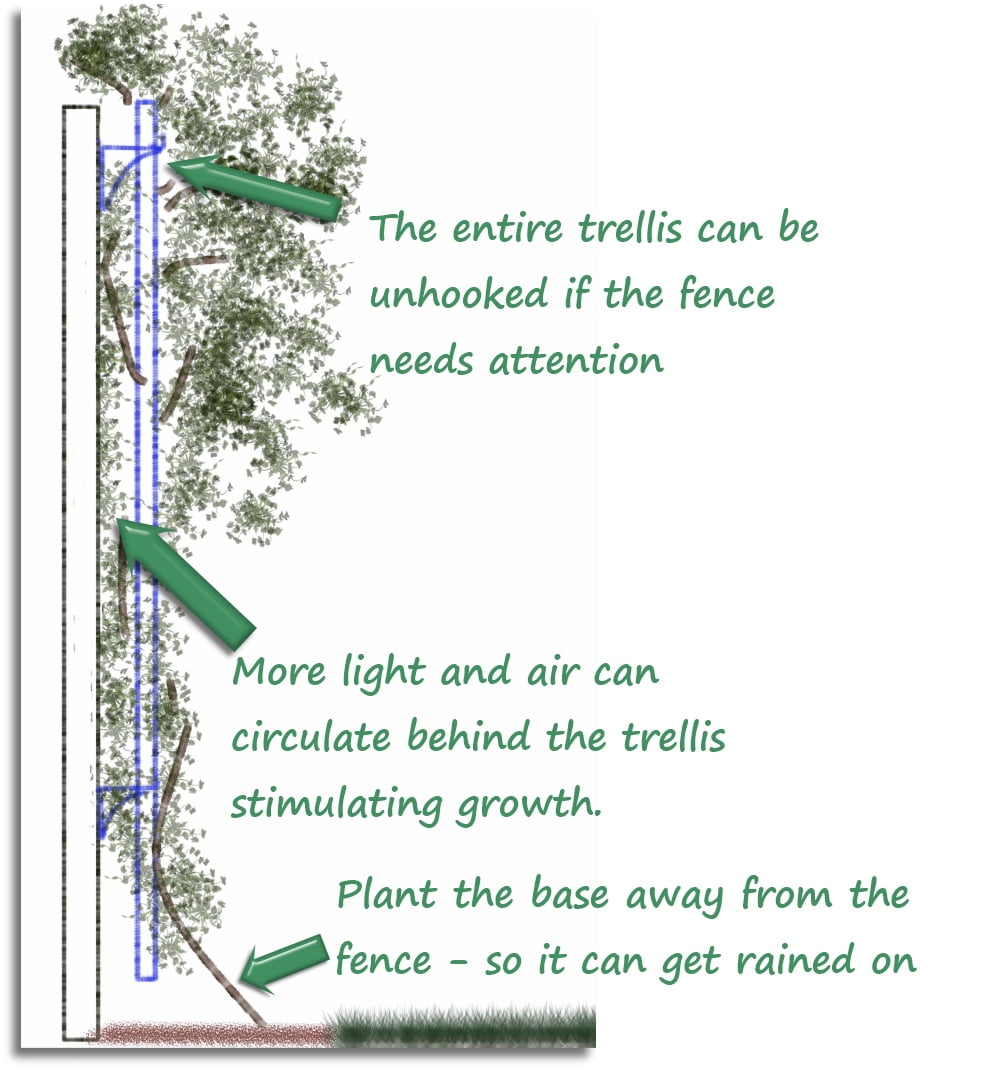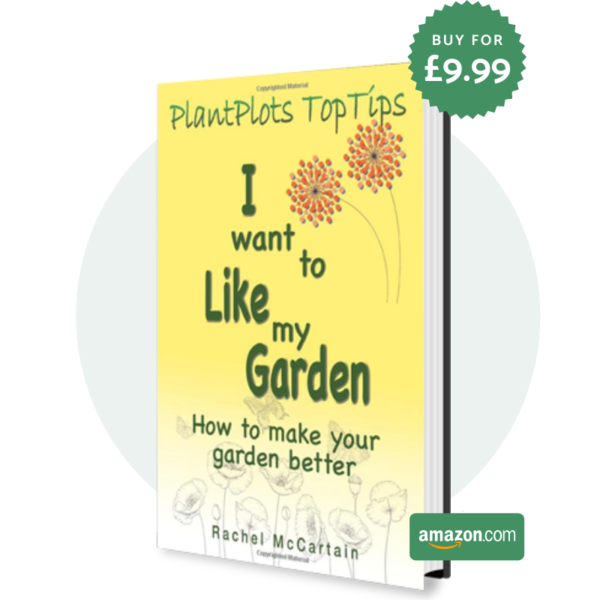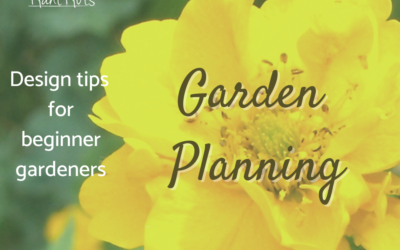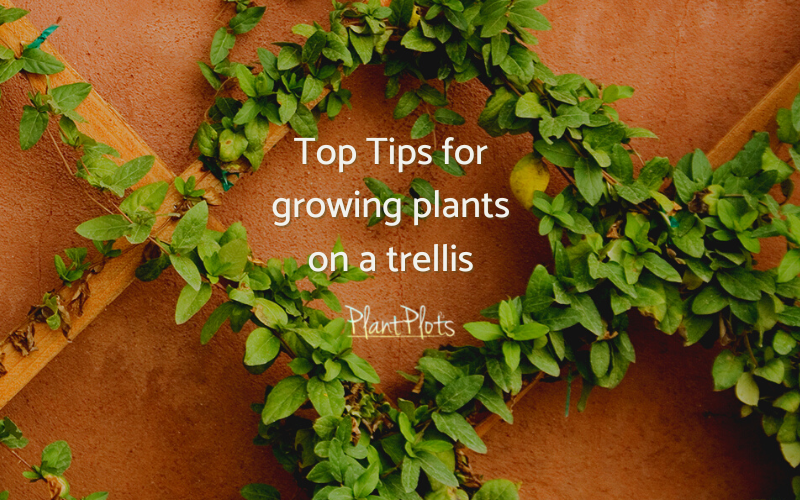
Trellis Tips – How to grow plants easily on a trellis
Do your climbers look gorgeous or do they resemble a plate of overcooked spaghetti falling off the fence?
Using a trellis is a wonderful way to lift plants up to our eye-line so we can enjoy and smell all those gorgeous flowers. However, there are a few useful trellis tips you need to know that will ensure the display is amazing and the plants growing on them thrive!
Firstly, why don’t plants grow well on a trellis?
There are 3 main problems that occur with trellis and climbing plants.
- The wrong sort of trellis is used.
- The wrong plant is growing on the trellis.
- The planting and siting of the trellis is wrong.
Or it is a combination of them all. In which case, the best option is to start again entirely. But let’s deal with the main causes of problems.
What trellis to use?
There are two main types of climber most of us grow, ones that we plant in the spring, that flower in summer and then die – Annual climbers.
Then there are the the Everlasting climbers. These come in a few size categories, 6ft or less, large and heavy, really large and really heavy and finally ‘requires industrial strength fixings’ or a tree to support it!
So, trellis needs to be big and strong to support most climbing plants
Annual Climbers:
Let’s deal with annual climbers, things like Sweet Peas, Nasturtiums, Black Eyed Susan etc.
These are short lived, thin stemmed, lightweight and not very thuggish. So all the pretty wicker trellis, plastic trellis and small obelisks etc are perfectly strong enough to cope.
As the plant dies in the autumn, it shrivels and the stems are easy to remove without breaking the trellis.
Perennial Climbers:
Now the perennial climbers – Roses, Clematis, Honeysuckle, Wisteria, Jasmine and so on. Wicker or plastic trellis are simply not going to be able to cope with the weight or the vigour of these plants. You need to have really sturdy trellis supported on really sturdy fixings to cope.
In conclusion, if you plant anything that will last more than a few months – you need to buy the strongest trellis you can. If the plant says it will grow to 10 feet tall in 5 years, then the trellis needs have at least 10 feet for the plant to grow along.
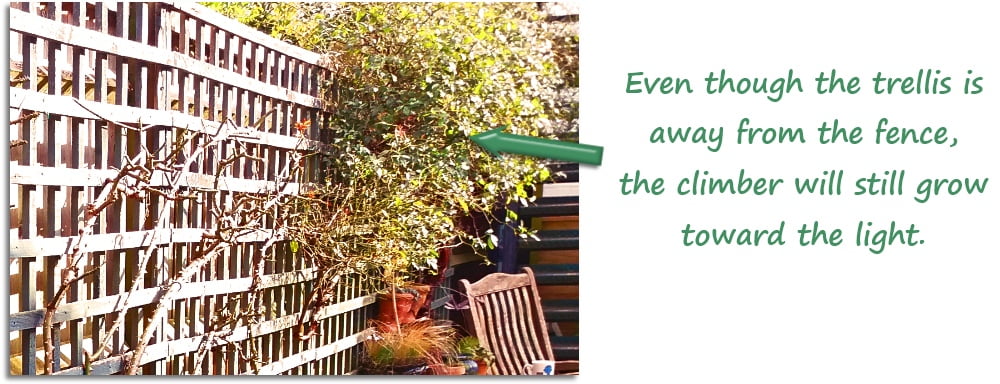
Take this picture.
The rose exerts a huge stress force on the trellis as it grows out toward the sunshine. Even this sturdy trellis can be broken by the growth of the stems. A couple of wall screws are not going to last very long when you have the added elements of a wet and windy day to contend with.
Right Trellis – Wrong Plant!
So, now you know you need a really big strong trellis for most (if not all) perennial climbers, unless you want to spend time constantly pruning and snipping an outsized plant.
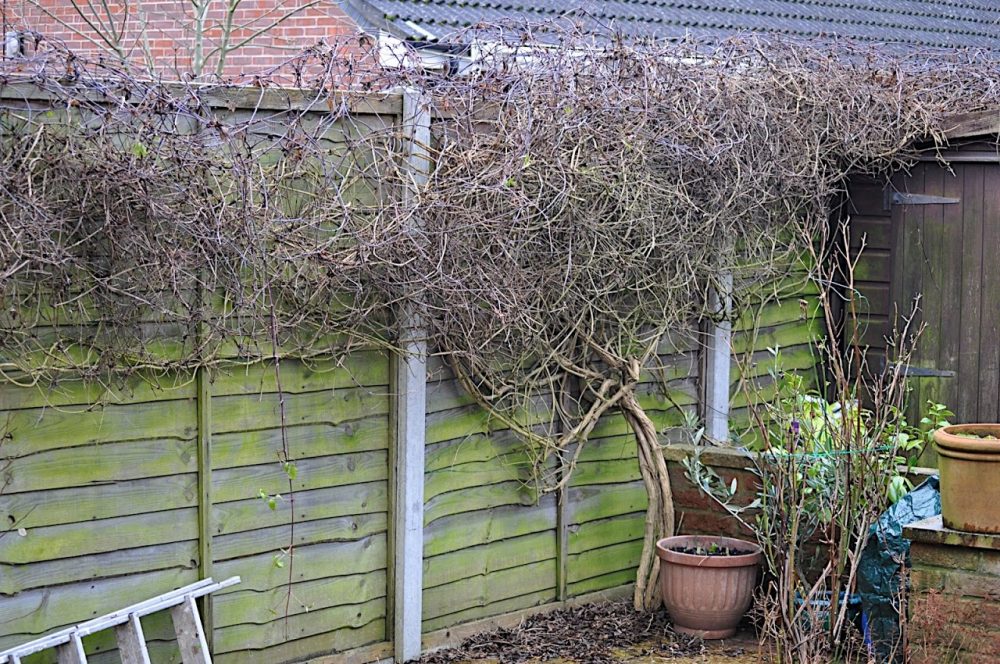
This climber is too big for this fence – it will not end well!
All plants on trellis need training to the desired shape or tying in – and this takes time. Some plants ‘tie’ themselves in and some plants can self cling, which sounds great until you need to untangle them.
If you intend to grow a plant up a trellis next to a fence or wall, then avoid these plants as they quickly resemble spaghetti!
Top trellis tips – In small gardens avoid these:
- Potato Vine or Solanum
- Honeysuckle
- Forsythia
- Clematis Montana
- Rambling Roses
- Passion Flower
- Polygonum or Mile a Minute (but you should never have this in a garden anyway!)
- Chilean Trumpet Vine or Campsis- this is a triffid, a very pretty one but a total triffid!
If you do want to grow these, then grow over a sturdy pergola rather than a flat fence.
Climbers that can go on a trellis – but that will nedd regular cutting backthroughout the season
- Golden Hop – this will probably grow too fast for most fences but it does dies back.
- Virginia Creeper
- Jasmine
- Ivy
The other plants such as Roses, Clematis, Wisteria all need proper pruning each year, but if done, these will all happily grow up the trellis.
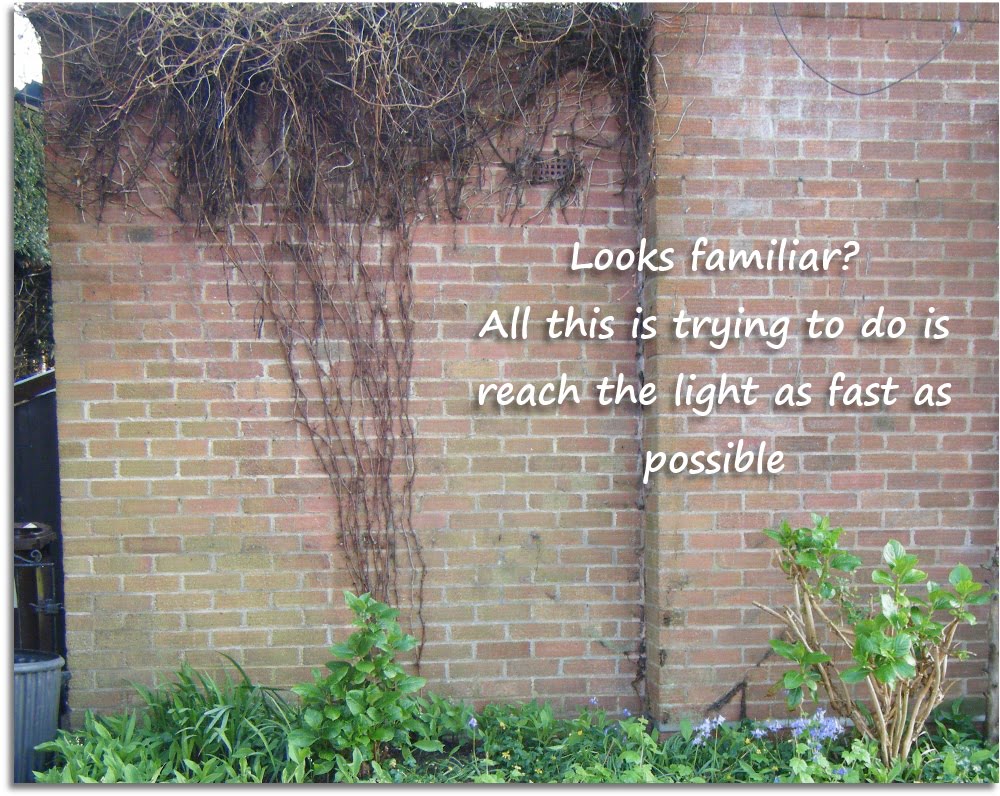
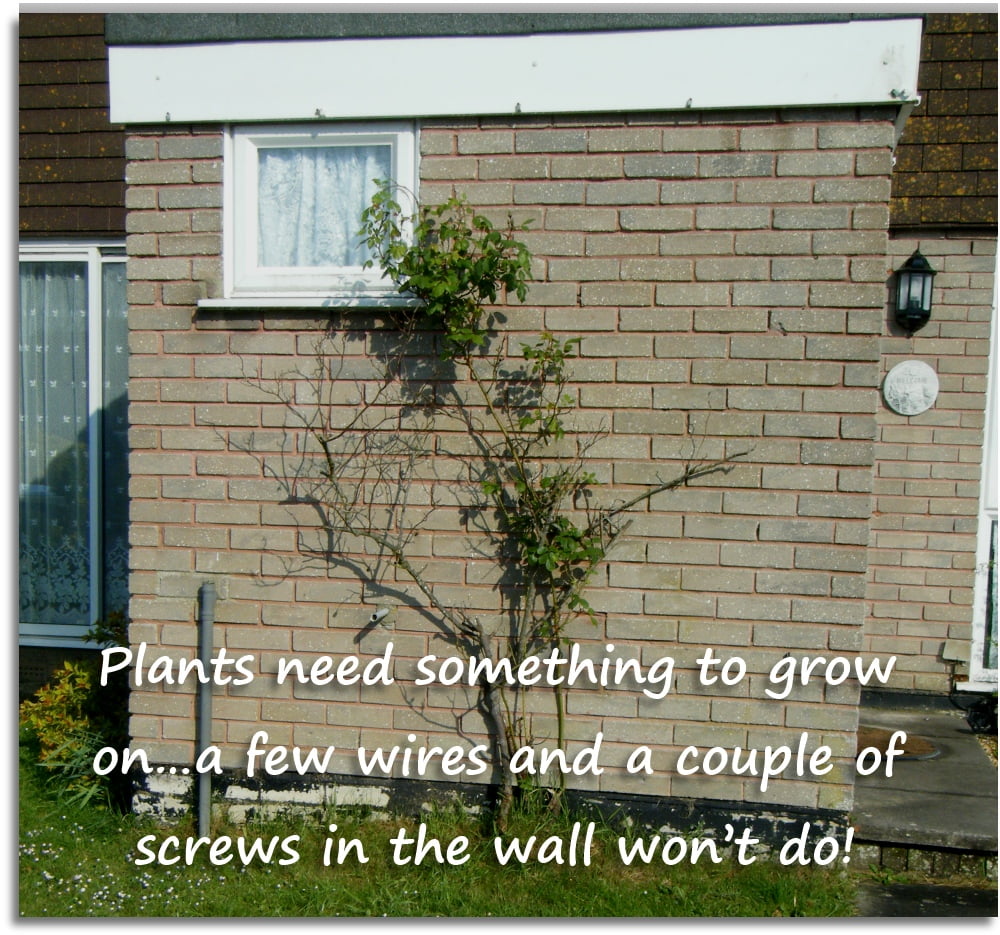
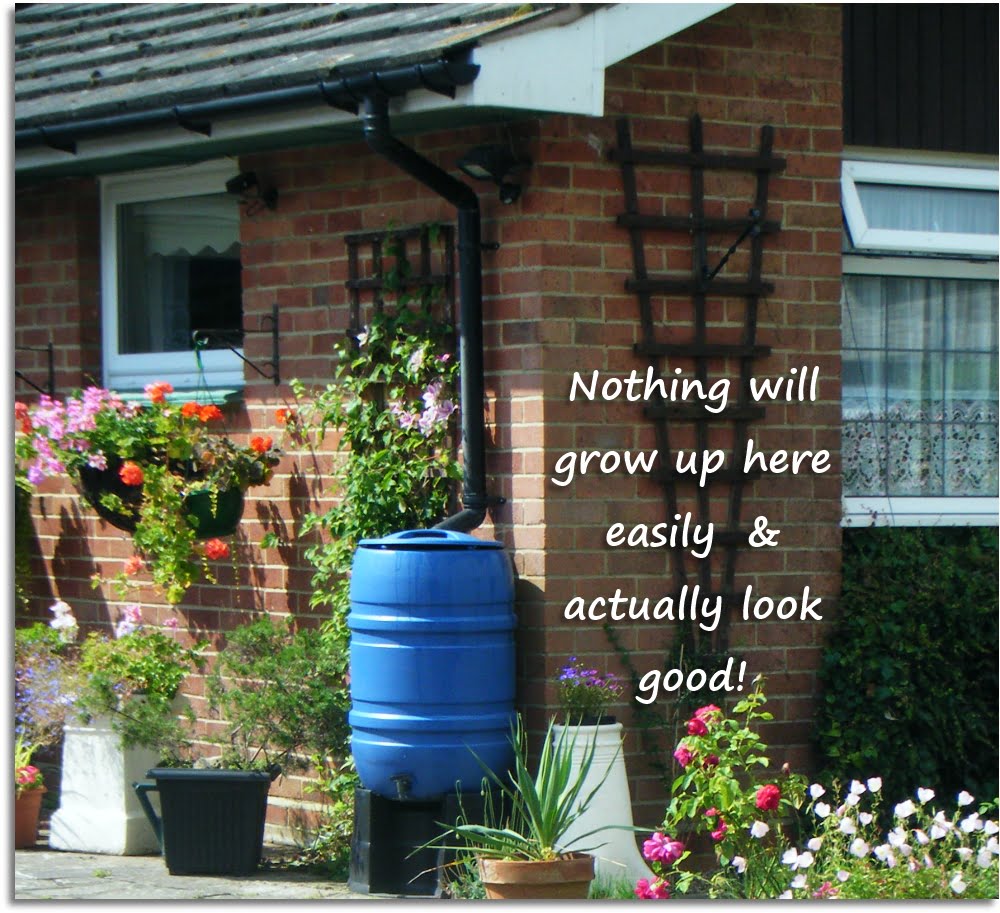
Finally, Planting and Siting:
All plants needs three things to grow, food, water and light. The problem with trellis on walls is that usually once the trellis is on the fence or the wall the plant ends up missing out on at least one of the vital elements.
Over time all plants will grow away from the fence. If however the trellis is fixed flush to the fence, the plant will grow unevenly it will suffer from leaf drop.
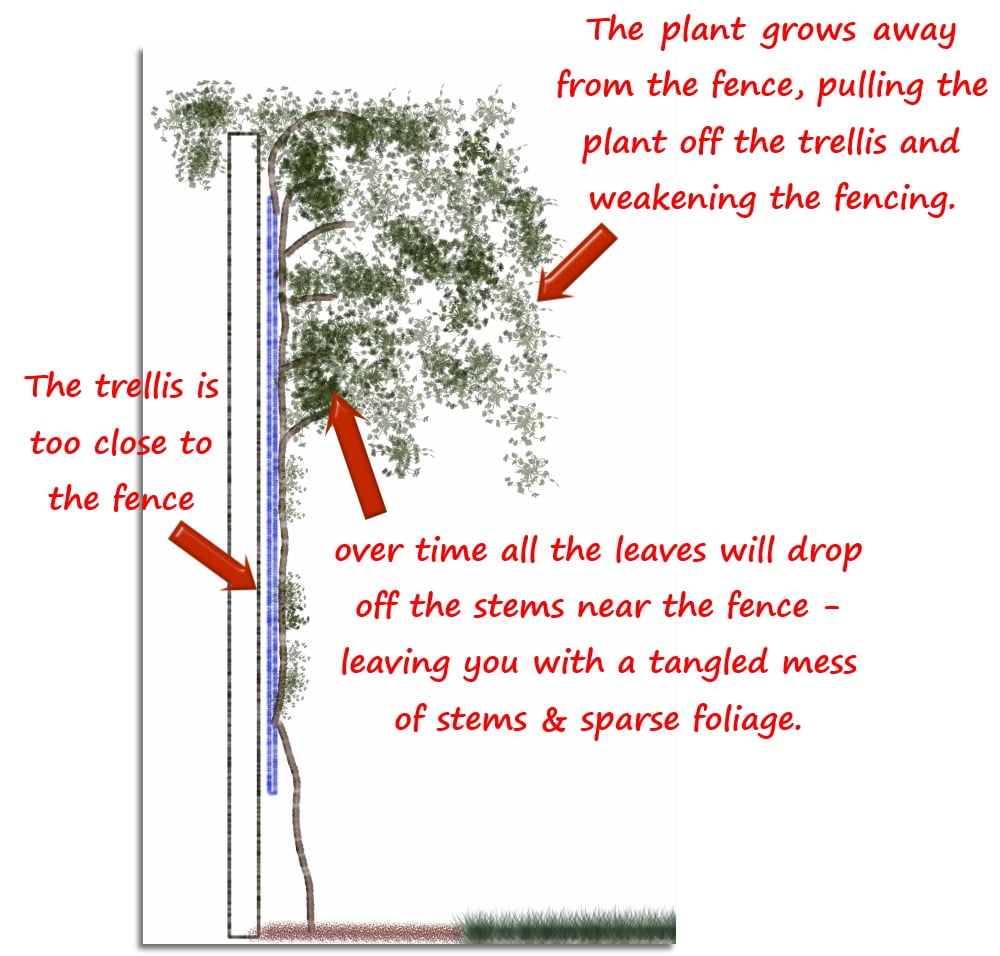
When attaching a trellis to either a wall or a fence, the best way is to use a bracket. The trellis can be hung on the bracket, so if the fence needs a lick of paint, it is simply unhooked and laid flat.
Plant the base of the plant as far away from the base of the fence as possible also.
Trellis Tips:
In conclusion, always buy a bigger and stronger trellis – it won’t disappoint, even though it cost a bit more. Think carefully the type of plant you are displaying. The trellis must be large enough for the plant to grow. Some plants look best on posts and pergolas, so think carefully whether it can be trained to grow well against a wall.
Think light, food and water before planting – make sure the plant can access all 3. If you don’t the plant will become very high maintenance!
Lastly, use a detachable hanging fixing – it saves so much aggravation in the long term.
Now clearly we could write a book on garden design that will help you plan even the narrowest of gardens better – which is brilliant because there IS a book to help you
I Want to Like my Garden by Rachel McCartain available at Amazon and other online bookstores in eBook and Paperback
